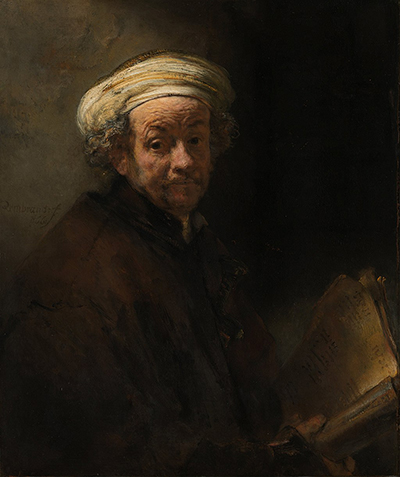Rembrandt here again applies modern styling (during his era) to biblical figures and stories
This is another key element of the collection in the Rijksmuseum in Amsterdam that boasts an impressive selection of key Flemish and European art from the Middle Ages up to the present day. The Dutch Golden Age is very well represented, as you would expect.
Artists such as Rembrandt had a great ability to connect religion to the normal life by adapting the symbolic items found within the bible to match more closely the styles of the day. In this painting he would depict Paul as a real person, making his journey both more believable and also something that religious followers could connect with visually.
This artist produced around 80 self-portraits during his lifetime, with the majority coming in his later years. Around half of these were oil on canvas, with this one coming along in 1661. The story behind this apostle is relatively sombre, reflecting on the individual's help to others whilst experiencing his own problems. He knew that he would ultimately die by the sword but insisted on continuing to lift the spirits of his epistles.
It was not common for artists to depict themselves as saints, but certainly more so other characters. Perhaps the use of saints might seem somewhat arrogant or disrepectful to religious teachings, as if the artist sees himself as an equal. This would not have been Rembrandt's intention here, more rather to draw attention to his emotional tale of suffering and sacrifice.




